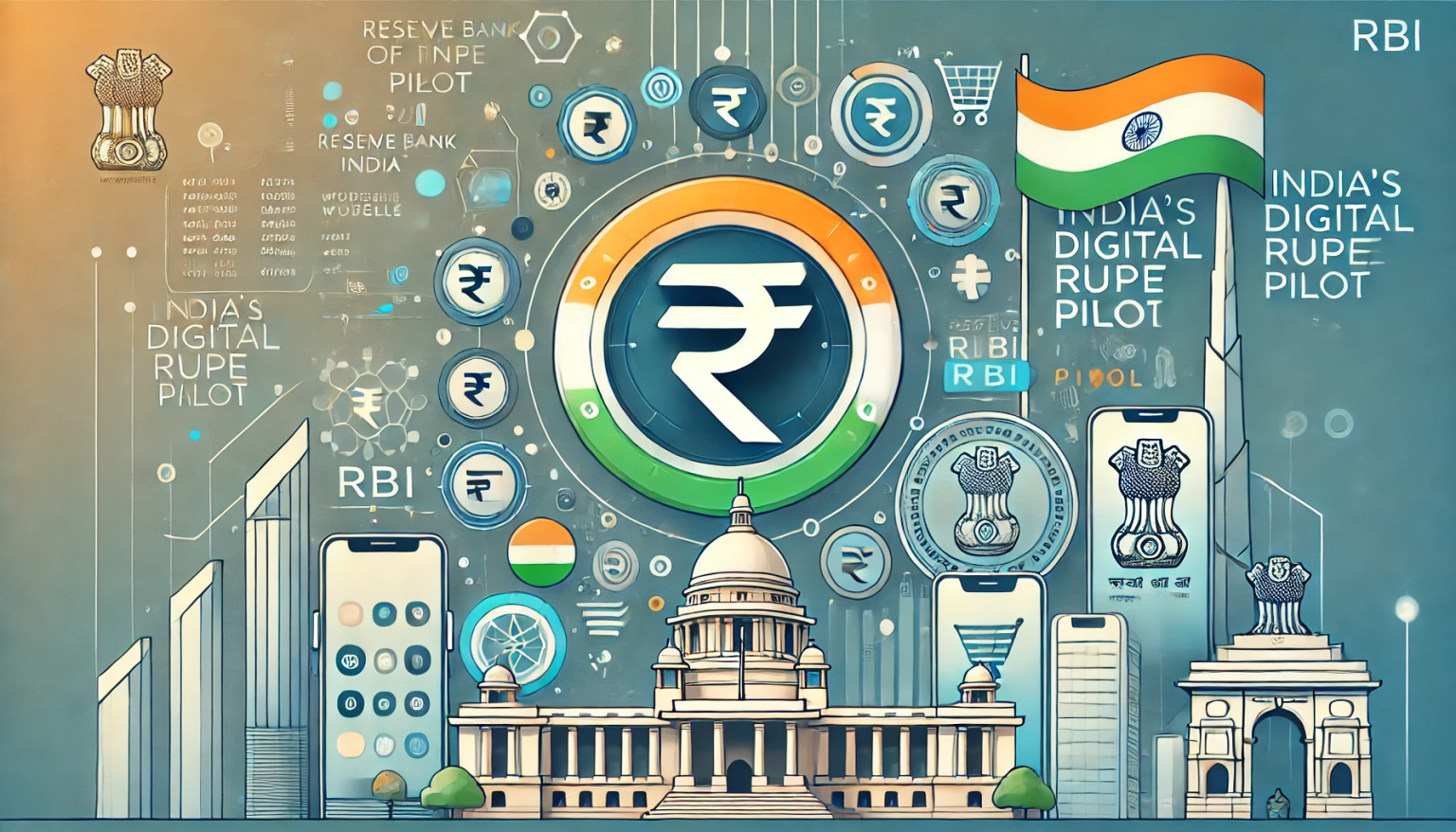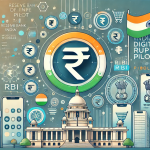Introduction
India has officially launched pilots for its Central Bank Digital Currency (CBDC) known as the Digital Rupee.
These pilots cover both wholesale and retail transactions, signaling India’s move toward a cashless and modern economy.
The Reserve Bank of India (RBI) is leading the initiative to test the digital rupee in real-world scenarios.
What Is the Digital Rupee CBDC?
The Digital Rupee is a digital version of India’s official currency (INR) issued and controlled by the RBI.
Unlike private cryptocurrencies, it is backed by the government and holds the same value as physical money.
The aim is to enhance payment systems and reduce reliance on cash.
Wholesale CBDC Pilot
The wholesale pilot focuses on bank-to-bank transactions and government securities settlement.
It helps improve efficiency in interbank payments and reduce transaction costs.
Large institutions can test fast and secure transfers using the Digital Rupee.
Retail CBDC Pilot
The retail pilot allows individual users to use the Digital Rupee for daily transactions.
Selected banks and customers in major cities are testing payments to merchants and peer-to-peer transfers.
The goal is to analyze how easily consumers can adopt and use the Digital Rupee in daily life.
Which Banks Are Participating?
Top banks like State Bank of India (SBI), ICICI Bank, HDFC Bank, and Yes Bank are part of the pilot.
They are offering Digital Rupee wallets integrated into mobile apps for customer use.
Merchants in cities like Mumbai, New Delhi, Bengaluru, and Bhubaneswar are accepting Digital Rupee payments.
Benefits of Digital Rupee for India
It reduces costs of printing and managing physical cash.
The Digital Rupee makes payments instant, traceable, and secure.
It can help in direct government transfers, subsidies, and tax collection without middlemen.
Impact on Indian Consumers
Consumers can make cashless transactions without relying on private wallets like Paytm or Google Pay.
Payments are settled instantly without any third-party involvement.
It also enhances financial inclusion, especially in remote areas.
Challenges in Adoption
Educating users on how to use the Digital Rupee safely is crucial.
Some people may be concerned about privacy since transactions are traceable.
Technical infrastructure needs to be robust to handle nationwide usage.
Difference Between Digital Rupee and Cryptocurrencies
Digital Rupee is a centralized, regulated currency issued by RBI.
Cryptocurrencies like Bitcoin are decentralized and unregulated in India.
While crypto is seen as speculative, Digital Rupee is stable and legal tender.
How It Will Impact Payment Apps and Banks
Banks will handle Digital Rupee accounts and wallets for users.
Apps may integrate Digital Rupee but must work under RBI’s strict guidelines.
It will increase competition in the digital payment space.
Future Plans for Nationwide Rollout
If pilots are successful, RBI plans to expand the Digital Rupee nationwide.
The government is preparing legal frameworks and security measures for full-scale adoption.
A nationwide rollout could happen within a couple of years, depending on pilot results.
International Impact and Collaboration
India’s CBDC move will influence other developing nations exploring digital currencies.
It may enable faster and cheaper cross-border payments in the future.
India is also discussing CBDC collaboration with other major economies.
What Experts Are Saying
Experts see the Digital Rupee as a powerful tool for modernizing India’s financial system.
They believe it can improve transparency and reduce fraud.
However, experts warn that privacy and security must be top priorities.
Conclusion
India’s Digital Rupee pilot is a historic step in reshaping the future of payments.
With benefits like instant transfers, reduced cash usage, and secure transactions, it holds great promise.
If implemented well, the Digital Rupee could revolutionize India’s economy and set global examples.








